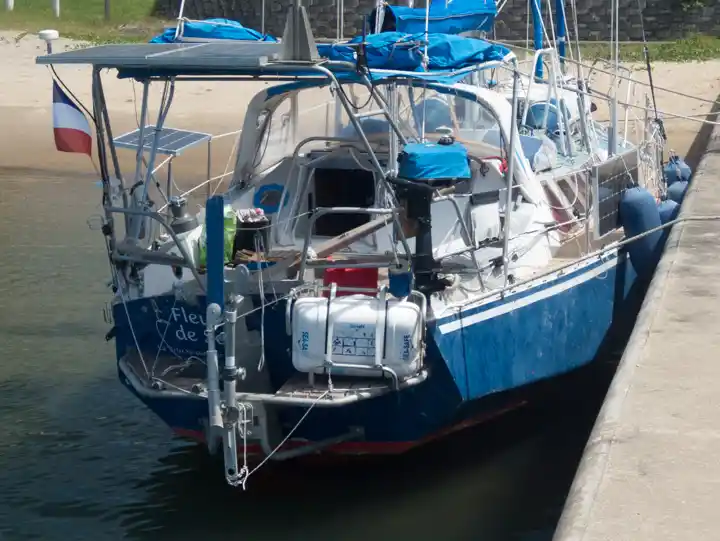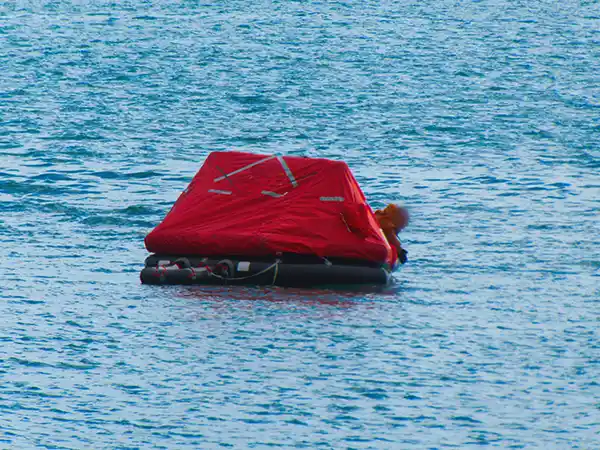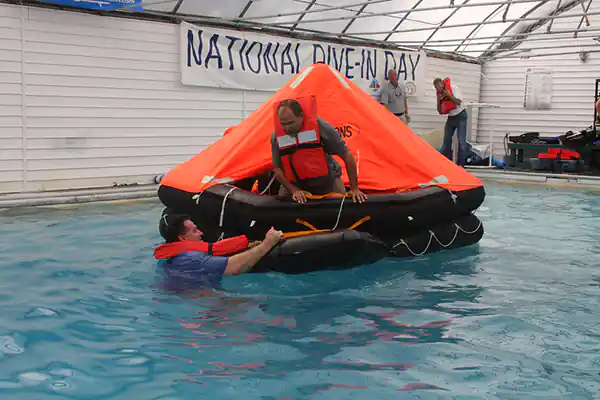5 key steps to a life raft you can depend on
When sailing offshore, safety is paramount. Having a life raft on board can make all the difference in case of an emergency: fire, water ingress, etc. But having a life raft on board is not enough. It’s essential to ensure that it will be in perfect operating condition when you need it most.
Let’s take a look at the essential steps you need to take to ensure that everything will work at its best in a critical situation at sea. Starting with protecting and storing your life raft.
Protecting your life raft
Once the raft has been purchased, it is crucial to make sure it lasts in a hostile environment. It’s often a major investment. It’s best to ensure that the life raft deteriorates as little as possible and to maximise its lifespan.
Of course, refer to your life raft manufacturer’s specific recommendations for precise storage and maintenance instructions. However, here are a few good practices that apply regardless of the model.
At all costs, avoid exposure to sharp objects, corrosive substances or sources of excessive heat. This would damage the raft’s flotation chamber or inflation systems. For maximum protection, rafts are often available in hardcases. These are more effective at protecting the raft and are preferable to the textile pouches offered as a cheaper alternative. The raft must also be able to withstand the elements, humidity and sunlight. All of these can also cause damage. Storage of the raft will therefore be just as important.

Storing your life raft
While modern boats often have dedicated recesses or lockers for a life raft, this is not always the case with older boat models. Even so, the choice of location for the life raft is crucial. It’s a question of striking a compromise between quick and easy access in an emergency, and protection from the elements.
In the absence of a dedicated locker, compartment or cradle, this isn’t always easy. But let’s first take a look at a few places to avoid. If a fire breaks out, accessing the interior of the boat may become impossible, so rule that out. Given the weight of a raft, a deep locker won’t allow you to extricate it quickly and easily. You should also avoid spaces which may become obstructed in the event of an emergency. Some mariners choose to store their raft on the top deck. But here again, in the event of capsizing it will be difficult to reach deep underwater.
Wherever you choose to store it, it’s imperative that your raft is securely lashed down. Even so, you need to be able to launch it quickly. We therefore recommend the use of strong velcro straps. Ropes should be avoided. If you do decide to go down this route, place a safety knife nearby and tie it securely. In an emergency, you will then be able to release the life raft quickly, without complications or delays. Ensure that the mooring points are robust and inspect them regularly to guarantee their reliability.
In any event, make sure that all crew members know the location of the life raft and can access it quickly if necessary. Proper storage and protection will ensure that your raft is ready for use in the event of an emergency. So you can set sail with peace of mind for your adventures at sea.

Photo credit: Richard Revel
Preparing your grab bag
Let’s digress for a moment and talk about the grab bag. Preparing your life raft goes hand in hand with preparing this waterproof bag. You will take it along if you need to abandon ship in no time at all.
Pack food rations, drinking water, survival blankets, a first aid kit and signalling devices (portable VHF(Very High Frequency) Radio wave frequency band, between 30 and 300 MHz. By extension, the most widespread marine radio sets, operating on a series of predetermined channels between 156 and 174 MHz, with a range of a few miles to a few dozens of miles. More, mirror, lights, hand-held and/or parachute flares). If you carry one on board, it may be a good idea to place your EPIRB distress beacon in the bag. Drinking water can quickly take up too much space for a large crew. Our tip is to have prepared an 80% full jerrycan. When plunged into seawater, it will float nearby without having to be hoisted aboard! Just attach it to your raft.
In any case, it’s vital that everything is in good condition and ready to use. The grab bag’s content will enable you to signal your presence, survive and wait for help in much better conditions.

Photo credit: U.S. Army Corps of Engineers
Having your life raft serviced
Although it can be costly, servicing your life raft is an essential step in ensuring your safety at sea. Arrange to have it inspected by a qualified professional. This is known as a life raft servicing station. Note that some of them may accept that you attend certain phases of the inspection, if you expressly request it.
Your expert will inspect, test and, if necessary, repair your life raft, which can make all the difference in a distress situation. This step ensures that your life raft is in perfect working order and ready to face the toughest conditions.
When you entrust the overhaul of your life raft to a qualified specialist, they will check several key aspects. Firstly, the outer envelope is carefully inspected for signs of wear, tears or potential damage. The station can carry out repairs if necessary or recommend appropriate measures.
Next, the buoyancy compartments are checked to ensure that they are airtight and that there are no leaks. These are the compartments that will ensure the raft’s buoyancy. If any leaks are identified, the station can repair them to ensure that the life raft functions properly. The inflation systems and hoisting straps or lines are also examined. This ensures that they are in perfect condition and ready to be used when needed. Your life raft can then be deployed quickly and efficiently in an emergency.
Finally, the overhaul includes replacing any of the raft’s equipment that may be damaged, worn or expired: flares, batteries, rations, water, fishing gear, etc. Remember to do the same for your grab bag, at least at the start of each season.
Training to use a life raft
Your raft is on board. It’s well protected, well stored and ready for use. Now it’s essential to know how to use it in an emergency. Here are a few important points to bear in mind.
Before setting sail, organise a security briefing with your crew. This will familiarise them with the proper use of the life raft. Make sure that each crew member knows the procedure to follow in case of emergency. Everyone needs to understand how the life raft is triggered. Typically, this involves pulling a rope, not forgetting to attach it to the boat before deploying it! Each crew member must also know what to do when it comes to evacuating the boat safely and boarding the raft.
Take advantage of the opportunities offered by your local coastguards, lifeboats or rescue organisations. Whether at boats shows or at events taking place in ports and seaside resorts, they regularly offer demonstrations using expired rafts for educational purposes. Do find out where and when!
These events allow you to learn from experts in the field and acquire practical knowledge about the proper use of a life raft. You’ll be able to familiarise yourself with the different functions of the raft and learn the best practices to follow. Failing that, at least watch a few videos on the internet. They will show you how to turn a raft over and how to get on board, which is not as easy as it sounds, especially when wearing an inflated life jacket.
You can also look at the procedures recommended by the manufacturer of your life raft. Each life raft can have its own particular characteristics. So it’s important to understand how to inflate it correctly and the ideal conditions for doing so. For example, in strong winds or rough seas, it’s best to wait until the last moment to inflate the life raft. This ensures that it is not yanked away from the boat.
Your raft ensures worry-free navigation
To sum up, if you have a life raft on board, that’s good. Most flag regulations will require you to carry one on board when sailing offshore. However, taking care of your raft is at least as important as having it on board. By following good practices in servicing, storage and training, you’ll be ready in the event of an emergency.
Have it serviced and store it correctly. Finally, make sure you and your crew are trained to use it. You can set sail with peace of mind knowing that you are prepared for almost any circumstance at sea.
